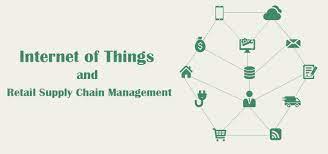The retail landscape is undergoing a transformative evolution with the advent of the Internet of Things (IoT). IoT, the interconnected network of physical devices, is reshaping the retail industry, offering unprecedented opportunities for efficiency, personalization, and enhanced customer experiences. This article delves into the multifaceted impact of IoT in retail, exploring how connected technologies are revolutionizing various aspects of the retail ecosystem.
Real-Time Inventory Tracking
IoT devices, such as RFID tags and sensors, enable real-time tracking of inventory. Retailers can monitor stock levels, track product movement, and receive automatic alerts for low inventory. This real-time visibility minimizes stockouts, reduces overstock situations, and enhances overall inventory efficiency.
Predictive Analytics for Demand Forecasting
By analyzing data from connected devices, retailers can leverage predictive analytics for demand forecasting. IoT-driven insights into consumer behavior, seasonal trends, and external factors enable more accurate predictions, empowering retailers to optimize stock levels and respond proactively to market demands.
Personalized Shopping Experiences
IoT contributes to personalized shopping experiences. Beacons and sensors in stores can recognize individual customers, providing personalized recommendations, discounts, and promotions based on their preferences and purchase history. This level of personalization enhances customer satisfaction and loyalty.
Smart Fitting Rooms
IoT transforms fitting rooms into smart spaces. RFID tags on clothing items can trigger digital displays in fitting rooms, showing complementary items, sizes, or colors. This interactive experience not only assists customers in decision-making but also adds a layer of convenience to the shopping process.
Energy Management
Connected devices enable energy-efficient store operations. IoT sensors can regulate lighting, heating, and cooling systems based on occupancy and ambient conditions. This not only reduces energy consumption but also contributes to cost savings for retailers.
Predictive Maintenance
IoT facilitates predictive maintenance for store equipment. Sensors on appliances and fixtures can monitor performance metrics, providing data for predictive analytics. Retailers can schedule maintenance proactively, preventing equipment failures and minimizing disruptions to store operations.
Automated Checkout with RFID Technology
IoT streamlines checkout processes with automated technologies. RFID tags on products enable automated checkout, where items are automatically scanned as customers exit the store. This reduces queuing time, enhances efficiency, and offers a frictionless shopping experience.
Mobile Point-of-Sale (mPOS) Systems
IoT-powered mPOS systems allow staff to process transactions from anywhere in the store. Tablets or handheld devices with integrated IoT technology enable quick and convenient checkouts, eliminating the need for customers to wait in traditional checkout lines.
Smart Surveillance Systems
IoT enhances security in retail through smart surveillance systems. Connected cameras with advanced analytics can identify suspicious behavior, track movements, and provide real-time alerts. This proactive approach helps prevent theft and ensures a safer shopping environment.
Anti-Counterfeit Measures
In the era of IoT, anti-counterfeit measures are strengthened. Connected devices, such as RFID tags or QR codes, can authenticate products. Customers can use their smartphones to verify the authenticity of items, fostering trust and confidence in the retail brand.
Customer Analytics
IoT-generated data provides valuable insights into customer behavior. Retailers can analyze foot traffic, dwell times, and popular shopping paths. These analytics inform strategic decisions, helping retailers optimize store layouts, product placements, and marketing strategies.
Operational Analytics
Beyond customer-centric analytics, IoT contributes to operational insights. Data from connected devices aid in assessing the efficiency of store operations, employee productivity, and the performance of various systems. This data-driven approach enables retailers to make informed decisions for continuous improvement.
End-to-End Visibility
IoT provides end-to-end visibility in the supply chain. From manufacturing to distribution and retail shelves, connected devices track the movement of products. This visibility enhances supply chain efficiency, reduces delays, and ensures that products reach retail stores in a timely manner.
Cold Chain Monitoring
For retailers dealing with perishable goods, IoT offers cold chain monitoring. Sensors equipped with temperature monitoring capabilities track the conditions of refrigerated or frozen products throughout the supply chain. This ensures the quality and safety of perishable items.
Data Security
The widespread adoption of IoT in retail brings forth data security challenges. Retailers must implement robust cybersecurity measures to protect the vast amount of data generated by connected devices, safeguarding customer information and maintaining the integrity of their operations.
Integration Complexity
Integrating various IoT devices and platforms can be complex. Retailers need seamless integration to derive maximum benefits from connected technologies. Overcoming compatibility challenges and ensuring interoperability are critical aspects of successful IoT implementation.
Conclusion
The impact of IoT in retail is profound, revolutionizing how retailers operate, engage with customers, and manage their supply chains. From personalized shopping experiences to streamlined operations and data-driven decision-making, IoT is a catalyst for positive transformation in the retail industry. As technology continues to advance, the integration of IoT is poised to play an increasingly pivotal role, shaping the future of retail experiences.

